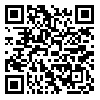BibTeX | RIS | EndNote | Medlars | ProCite | Reference Manager | RefWorks
Send citation to:
URL: http://jria.iust.ac.ir/article-1-254-en.html
2- IUST (Iran University of Science and Technology)
Moving toward third millennium is characterized by capabilities in transforming human life. Specially, development of information technologies in everyday life lead to great changes in communication tools andour current understanding ofurban social life. Indeed, telecommunications because of independency from time—space constraints, provide a new unlimited space for social interactions in global scale. Now, this development in Islamic societies is remarkable, because Islam has many detailed rules in social relations. So, in this situation studying and exploring social and cultural dynamics in cyber environments and its implications for physical cities is a key task of urban planners in Islamic communities to sustain and develop these cities.
In this research, first of all we reviewed some of the basic concepts of social life from Islamic view. We explored the reflection of these rules in Islamic cities and spatial aspect. After that, for each concept, we explored the potential implications of Information technology for Islamic society in the information age. The results showed that Islamic cities are reconstructed as complex amalgam of electronic spaces and urban places,in which, Information Technology has dual impacts on the city: in one hand, a potential for more social interactions, sharing ideas and promoting social integration and in the other hand, encourage the polarization of society, dispersed social relations etc. This indicates only a few parts of complexities in this area and the necessitiesin rethinking Islamic city in the age of digital communications.
Received: 2015/11/11 | Accepted: 2015/11/11 | Published: 2015/11/11
| Rights and permissions | |
 |
This work is licensed under a Creative Commons Attribution-NonCommercial 4.0 International License. |





